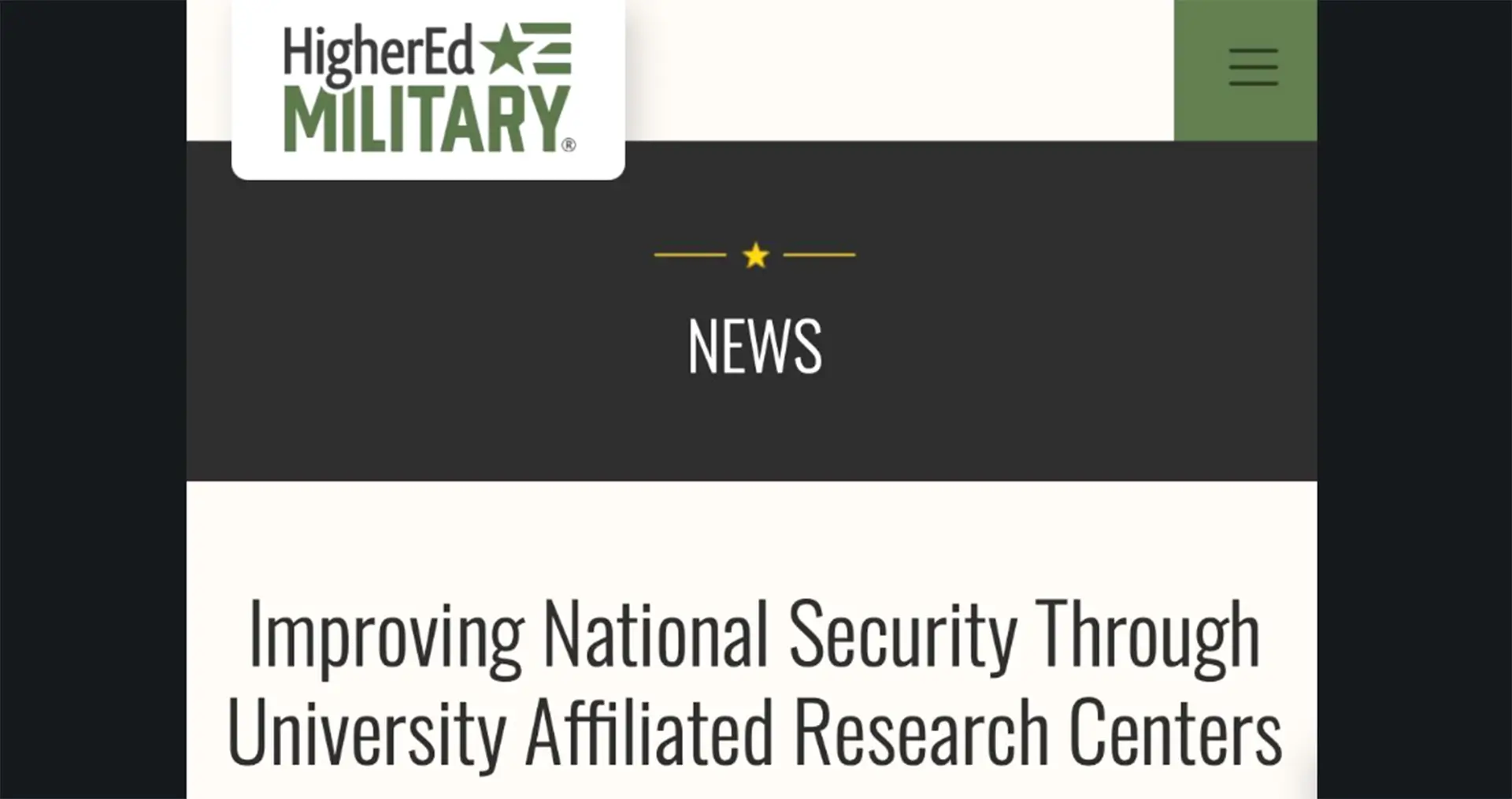Thanks to Col (ret) Cory Baker for mentioning ICT in his recent article: “Improving National Security Through University Affiliated Research Centers” which appeared in HigherEd MILITARY.
In his article Col Baker writes:
“More UARCs are needed for the good of postsecondary education and the nation’s defense writ large, contending the 15 DoD-sponsored UARCs are not enough to fuel the U.S.’s RDT&E requirements in this Great Power Competition (GPC) era.”
“According to the Office of the Under Secretary of Defense, Research and Engineering (USD(R&E)): “While any university can receive funds from the Department to perform work, that does not make them a UARC. Rather, all DoD UARCs are approved by USD(R&E) after a rigorous review and competitive selection process conducted by the proposed primary sponsor. Only USD(R&E) can establish, transfer, or terminate a UARC.” RDT&E partnerships between defense agencies and academia have existed for decades. Military-university partnerships began in earnest during the Second World War because of the nation’s urgent need for improved weapons and defense technology. Over time, partnerships formalized into official arrangements such as Federally Funded Research and Development Centers and UARCs. Formally created in 1996 to operate as contracts in a non-profit capacity under the authority of 10 U.S.C. § 2304(c)(3)(B) and the FAR § 6.302-3(a)(2)(ii), UARCs are higher education research organizations assisting and advancing the DoD’s RDT&E pursuits.”
With university-employed scientific experts operating under oversight by a primary DoD sponsor, the 15 UARCs are:
- University of California, Santa Barbara’s Institute for Collaborative Biotechnologies (Army)
- University of Southern California’s Institute for Creative Technologies (Army) ********
- Georgia Institute of Technology’s Georgia Tech Research Institute (Army)
- Massachusetts Institute of Technology’s Institute for Soldier Nanotechnologies (Army)
- Johns Hopkins University’s Applied Physics Laboratory (Navy)
- Pennsylvania State University’s Applied Research Laboratory (Navy)
- University of Texas at Austin’s Applied Research Laboratories (Navy)
- University of Washington’s Applied Physics Laboratory (Navy)
- University of Hawaii’s Applied Research Laboratory (Navy)
- Utah State University’s Space Dynamics Laboratory (Missile Defense Agency)
- University of Maryland’s Applied Research Laboratory for Intelligence and Security (Office of the Undersecretary of Defense for Intelligence and Security)
- Stevens Institute of Technology’s Systems Engineering Research Center (Office of the Undersecretary of Defense for Research & Engineering)
- Howard University’s Research Institute for Tactical Autonomy (Air Force)
- University of Nebraska’s National Strategic Research Institute (U.S. Strategic Command)
- University of Alaska Fairbanks’s Geophysical Detection of Nuclear Proliferation (Deputy Assistant Secretary of Defense for Threat Reduction and Arms Control)
“These UARCs are driving innovation, impacting policy agendas and policy execution within the DoD via critical RDT&E contributions. UARC missions run the gamut and within each center missions are impressive and quite varied. The Johns Hopkins Applied Physics Laboratory, cited as the nation’s largest UARC, lists as its core competencies: “Strategic systems test and evaluation, submarine security and survivability, space science and engineering, combat systems and guided missiles, air and missile defense and power projection, information technology, simulation, modeling, and operations analysis, and mission-related research, development, test, and evaluation.”
“The U.S.’s adversaries are pushing hard to advance their strategic positions in the present GPC environment. In light of persistent national security challenges, it can be surmised increased RDT&E efforts are needed. While UARC establishment is not without hurdles, UARCs present an exciting and proven tool through which national security improvements can be realized. Moreover, the standard UARC RDT&E agenda, largely with hard science concentrations, should be reconsidered as a result of current geopolitics. Greater expansion of UARC missions into other disciplines such as finance, law, medicine, agriculture, and the soft sciences is worthy of exploration by both policymakers and university officials. Policymakers should act promptly to reform and ramp-up the country’s UARC-generated efforts and infrastructure. The number of UARCs could be increased to provide decision-makers more alternatives to fortify the country’s evolving national security posture.”
Full story here: https://www.higheredmilitary.com/news/articleDisplay.cfm?ID=4232
